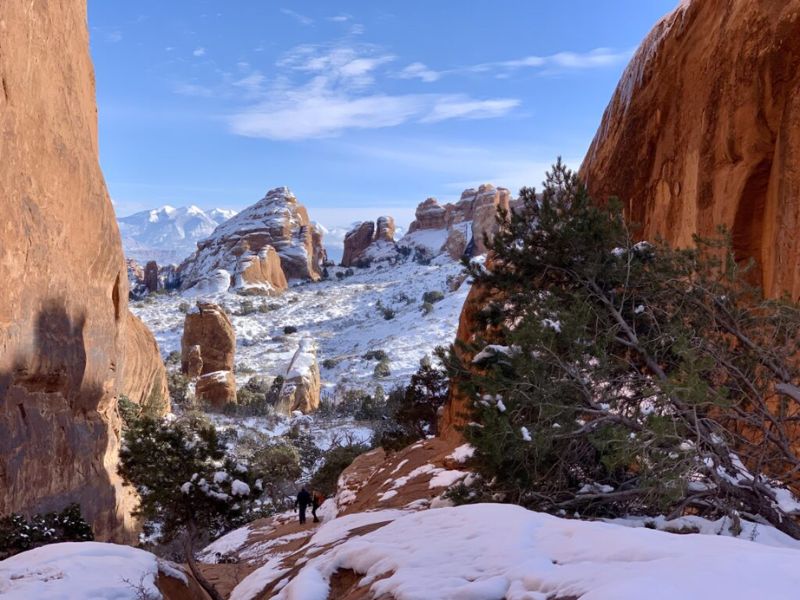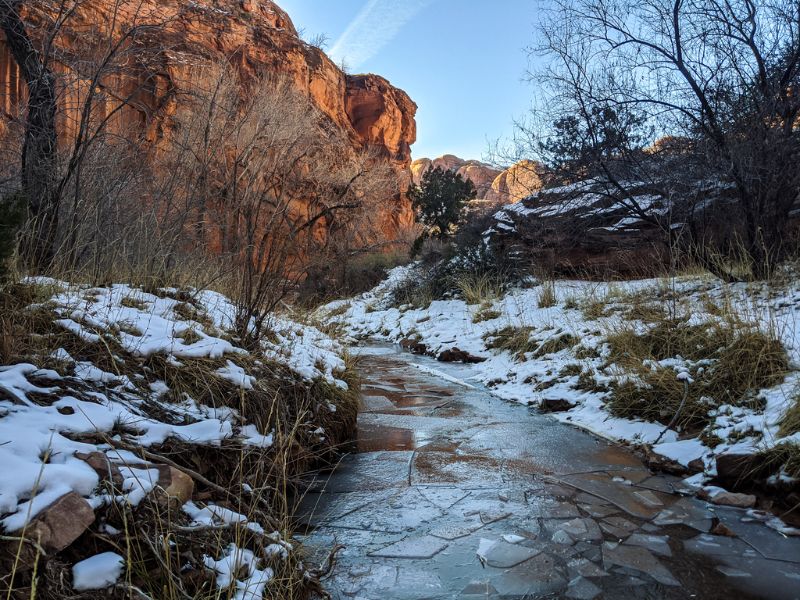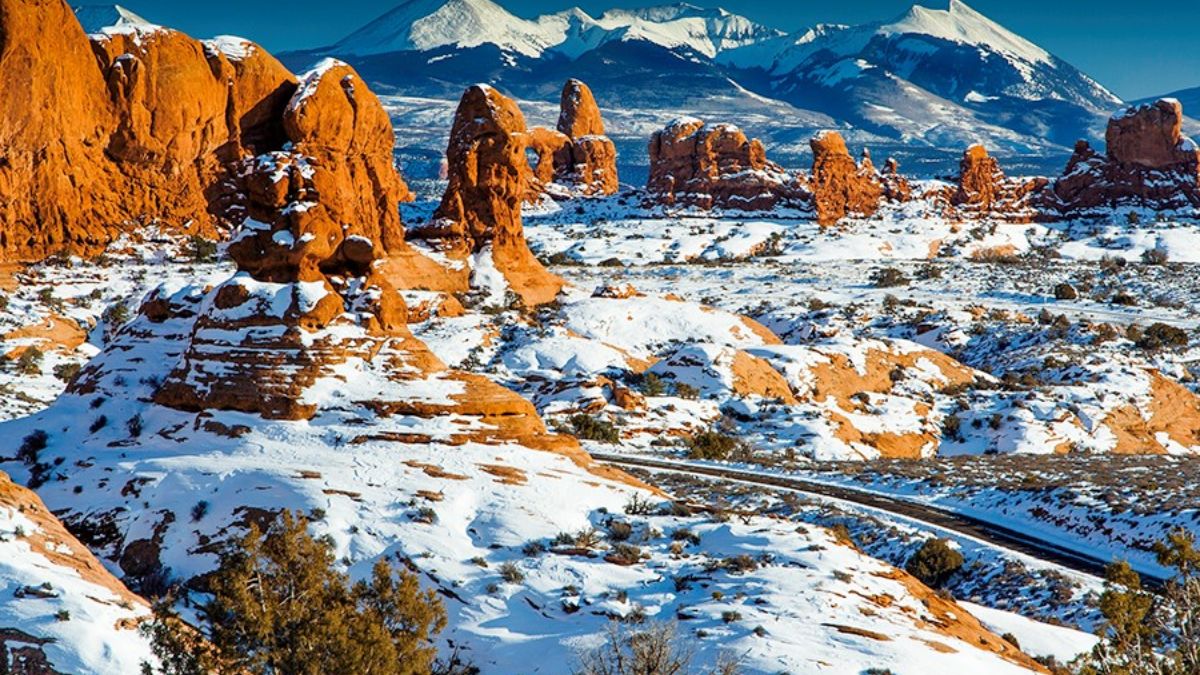Yes, it does snow in Moab, Utah, although it is not a frequent or heavy occurrence. Moab, known for its desert climate, experiences relatively mild winters with occasional snowfall. On average, Moab receives around 3 to 5 inches of snow per year, typically falling between the months of December and February.
While Moab may not be a typical snowy destination, the occasional winter snow can add a unique charm to the already breathtaking red rock landscapes of the area. Visitors lucky enough to witness Moab dusted in white can capture stunning photographs and experience a different side of this beautiful southwestern gem.
Moab, Utah, is renowned for its stunning red rock landscapes, picturesque national parks, and outdoor adventure opportunities. However, when it comes to weather, Moab’s desert climate might lead some to wonder whether it ever experiences snowfall.
In this article, we will explore the climatic conditions of Moab and discuss whether snow is a regular occurrence in this southwestern gem.
Location Overview of Moab
Moab is a picturesque city situated in the southeastern part of the state of Utah, in the United States. Nestled within the vast Colorado Plateau, Moab is surrounded by stunning natural beauty and unique geological formations, making it a popular destination for outdoor enthusiasts and nature lovers alike.
Moab is located in Grand County, Utah, along the banks of the Colorado River. It is 180 miles southeast of Salt Lake City, the capital of Utah. The city is strategically positioned near two iconic national parks: Arches National Park, located just north of Moab, and Canyonlands National Park, which lies to the west.
The region surrounding Moab is characterized by breathtaking red rock landscapes, mesas, canyons, and towering sandstone arches. The area’s unique geological features have been sculpted over millions of years by natural processes, including erosion and tectonic activity.
Moab is a mecca for outdoor adventurers and sports enthusiasts. The area’s diverse landscapes provide opportunities for activities such as hiking, mountain biking, and rock climbing. The famous Slickrock Bike Trail attracts mountain bikers from around the world, while the Colorado River offers thrilling rafting experiences.
Moab, Utah, is a haven for nature enthusiasts, offering access to stunning landscapes and world-famous national parks. Whether exploring the mesmerizing rock formations, or simply soaking in the awe-inspiring vistas, Moab provides an unforgettable experience for all who visit this remarkable corner of the United States.
Geography and Climate of Moab
Before delving into the specifics of snowfall, it’s essential to understand the broader climate of Moab. Situated in the southwestern region of the United States, Moab falls within the Colorado Plateau.

The area is characterized by its high desert environment, with hot summers and relatively mild winters. The city experiences a semi-arid climate, which means it receives very little precipitation throughout the year.
Moab has a semi-arid climate with hot summers and relatively mild winters. Summers are dry and scorching, with temperatures often exceeding 100 Fahrenheit. Winters are generally more pleasant, with daytime temperatures ranging from the mid-40s to low 50s Fahrenheit, although nighttime temperatures can drop below freezing.
Historical Snowfall Record of Moab
Moab, Utah, has a desert climate, and snowfall in the region is relatively infrequent. On average, Moab receives around 3 to 5 inches of snow per year. Snowfall typically occurs during the winter months, primarily between December and February.
However, it is essential to note that these figures can vary significantly from year to year, and occasional snowstorms may bring more substantial amounts of snow to the area.
Since snowfall in Moab is relatively rare compared to many other parts of the country, the city and its residents are generally well-prepared to handle any minor snow events that may occur. Here are some notable dates of prominent snow events in Moab, Utah, based on historical records:
- January 10, 1963
Moab experienced a significant snowstorm that brought several inches of snow to the area. This event is often referenced as one of the more notable snowfalls in the city’s history.
- December 30, 1996
Another notable snowstorm occurred on this date, leaving a blanket of snow across Moab and the surrounding region.
- December 26, 2003
Moab saw a white Christmas with a snowstorm that began on Christmas Day and continued into the following day, creating a picturesque winter scene in the desert.
- January 21, 2010
On this date, Moab experienced a snow event that brought substantial snowfall, impacting travel and outdoor activities in the area.
- Recommended: Does It Snow In Waco, Texas? All About Waco Climate
Winter Season & Snowfall Pattern of Moab
Although Moab is not a typical snowy wonderland like some northern regions, it is not entirely devoid of winter weather. During the colder months, temperatures in Moab can drop significantly, especially during the nighttime. However, it is during the evening and early morning hours that the mercury can dip below freezing.

Snowfall in Moab is a relatively rare occurrence, but it does happen occasionally. On average, Moab experiences around 3 to 5 inches of snow per year, typically falling between the months of December and February.
While this amount of snow may seem modest, it is enough to create a beautiful contrast against the red rock formations, making Moab an enchanting sight for visitors lucky enough to witness this unique phenomenon.
Moab’s annual precipitation is relatively low compared to other parts of the country. Most of the rainfall occurs during the late spring and early fall months. Summers are hot and dry, while winters are generally mild and cool. However, despite its desert climate, there is a possibility of experiencing snow in Moab during the winter season.
Locations to Enjoy Snow Near Moab
While Moab, Utah, is known for its desert landscapes, there are a few nearby locations where visitors can enjoy snow activities during the winter months. These places offer opportunities for snow play and winter adventures while still being close enough to Moab for a day trip or short excursion.
Here are some locations to enjoy snow in and around Moab:
- La Sal Mountains
The La Sal Mountains, located approximately 20-30 miles southeast of Moab, offer a beautiful alpine environment and opportunities for winter activities. At higher elevations, the mountains receive more snow, making them an excellent destination for snowshoeing, cross-country skiing, and snowmobiling.
- Dead Horse Point State Park
Dead Horse Point State Park, situated just a short drive from Moab, can sometimes experience snow during the winter months. The park’s high elevation provides the chance to witness snow-capped mesas and breathtaking winter vistas.
The Rim Trail and other viewpoints within the park offer stunning views of the snow-covered canyons and the Colorado River below.
- Canyonlands National Park
Although snowfall in Canyonlands National Park is relatively rare, some of the higher elevation areas in the park may occasionally see snow during winter storms. Island in the Sky, the most accessible district of Canyonlands from Moab, offers beautiful overlooks that can transform into winter wonderlands.
- Arches National Park
Arches National Park itself rarely sees significant snowfall due to its lower elevation, but it’s not entirely uncommon to experience light snow dustings on the iconic red rock formations. Witnessing the red rocks contrasting with a thin layer of snow can create a unique and captivating scene for visitors.
- Fisher Towers
Located northeast of Moab, the Fisher Towers area is another spot where you might encounter snow during the winter. The towers and surrounding landscapes are stunning to explore in any weather, and with a bit of snow, the scenery takes on an entirely different charm.
Factors Influencing Snowfall in Moab
Snowfall in Moab, Utah, is influenced by several factors. One primary factor is the city’s semi-arid desert climate, which typically results in minimal precipitation, including snow. Moab’s relatively low elevation, around 4,000 feet, also contributes to the infrequency of snow events.
When cold weather systems move into the region during the winter months, they may bring light snow showers, but the overall snowfall remains limited. Additionally, the presence of nearby mountain ranges, such as the La Sal Mountains, can lead to localized snowfall in higher elevations, offering opportunities for snow activities close to Moab.
Overall, while snow is a rare occurrence in Moab, the region’s unique geographical and climatic characteristics occasionally create a captivating juxtaposition of red rock landscapes and white winter dustings.
Conclusion
While Moab, Utah, is renowned for its arid desert landscapes and warm climate, it does experience occasional winter snowfall. Although snow is a relatively rare occurrence, the possibility of seeing the red rock formations dusted with a light layer of white can be a captivating and unique experience.
If you plan to visit Moab during the winter months, keep an eye on the weather forecast, as you might get the chance to witness the city’s enchanting transformation into a winter wonderland.
